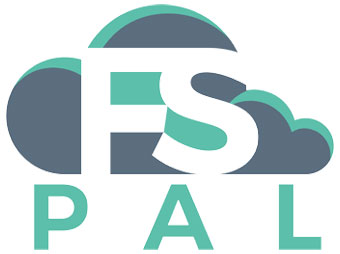In the next few years, banking will face new entrants, not only challenger banks but also aggregators and account comparison engines that will suggest which is the best bank to do business with.
Banks will need to be excellent offering not only competitive products and services, but also a smooth account opening process. In a competitive market banks will need a simple and convenient account opening / switching process.
Benchmarking your Account Onboarding
There are numerous key performance indicators to look at, but the ones that I consider the most important are:
- Average time to onboard: Minimise how long does it take from start of the application to an account fully opened. Aim for one to five days depending on the complexity of the customer
- Number of fields to be keyed in: Excellence would be less than 50 for business banking, 25 for retail banking
- Hours of manual processing: Aim to avoid human intervention for simple cases. For complex cases an average of 1-hour intervention looks good.
We will now look at initiatives that can help you achieve excellence.
Smart questions
This point might appear to be trivial, but it is not. Two of the main complaints from customers are that they are repeatedly asked the same questions, and that they are not easy to understand. For example, the concepts of profit, turnover, gross margin are concepts that even some successful businessmen do not fully understand (If you don’t believe me tune on to Dragon’s Den on a Sunday night)
Grab your long questionnaire, check which bits of data are actually required and remove the rest. Then ensure that there is no duplication in the questions list. For example, try to cover all trade related enquires under a single question. Once you have done this, have a look at offering predetermined choices for customers.
Once you are down to the core list, get some help in order to rephrase your questions and help guidelines. Use people that are not business and IT savvy to improve on this, and benchmark against the competition.
Automatic Data pre-population
Using existing data sources to help you pre-populate data is a key element to avoid overwhelming the customer.
- Internal bank data: If you customers are applying for a business account and the person is already registered with the bank, use all of the customer’s information to streamline the process. The same applies for secondary accounts. It seems obvious but not everybody is doing this
- External sources: Credit bureaus such as Experian, Equifax and Callcredit gather plenty of information on customers. So do other firms such as Dun and Bradstreet. A good source for company data is also contained in Companies House in UK.
- APIs to other banks: With new CMA and PSD2 guidelines, it will be possible to extract data from other banks. Initially the data will be limited in terms of personal and business details (name, date of birth, address, phone number) but this will quickly expand.
- Social Media: This can potentially be used for prefilling data as explained below.
Submit documents online
Whilst it would be great to open accounts without presenting any documents, this is not always possible. A useful way to avoid customers having to visit branches is to offer them online tools to submit.
Uploading customer signatures can help speed the process of setting up account mandates. There are several e-signing solutions, but a simple scan of a signature inside of a predefined template can do. Ensure that you integrate with your core systems to minimise manual work.
For the Know your Customer process (KYC), Online identification solutions such as Jumioor Idcheck can help with verifying identification documents. These solutions combine algorithms to check for document authenticity and specialist advisors, which day in and day out check whether documents are legitimate. I have seen several examples where these are used, and the systems are good at decreasing third party fraud.
Modernise your Credit Scoring Process
Typically banks will use a credit scoring formula based on data that they hold and combine it with Credit Reference Agencies. However this results in declining credit for many individuals and businesses.
Before a customer completes a lengthy application, offer a decision in principle, to save customers the hassle of applying in case there is a chance this person will not fulfill your criteria. HSBC has created a neat Eligibility Checker.
Check companies such as Kabbage and Ondeck, which provide fast funding for small businesses. Kabbage offers loans up to US$100.000 and uses APIs to different ecommerce, accounting and payment platforms to check your activity with them. These include Paypal, Stripe, Square, Ebay, Amazon, Sage, Xero, Quickbooks and produce an accurate picture of the applicant’s financial status. The combination of several data sources can provide a good view on loan affordability.
As the CMA and PSD2 changes land, it will also be good to incorporate APIs to the other banks transaction history. In the US, this is already being done by BodeTree, a firm that can connect to most financial institutions and aggregate the required financial information for making a decision. It may be a good idea to outsource this activity to an IT specialist, as it looks like a subject that requires specialist knowledge.
Consider Social Media for your KYC
KYC has generally required presenting an identification document and a verification of address. However, this is not really what the guidance from the EU AML Directive or from the JMLSG suggests, which requires using different data sources, but not necessarily government issued documents. A startup called Veridu proposes a different type of KYC, one that uses connections to social networks to verify the customer’s identity. We generate large amounts of data about ourselves online every single day, by buying online, socialising, sharing photos, etc. These elements combined together build a very unique footprint that is difficult to fake or steal. Veridu can connect through APIs to Facebook, Linkedin, Google+, Twitter, Amazon and Paypal and estimate how many hours you have spent using these services, and cross check your personal details. It can also be useful for prepopulating your application.
Ensure Straight through Processing (STP)
Once the account is open, onboarding is not over. Your customer needs to receive credentials for all required services, such as PINs for cards, logins to mobile and internet banking, as well as telephone banking automatically. Don’t ruin their experience by forcing them to call your contact centre and fall back into legacy processes. I like Holvi’s onboarding approach, where they offer a Skype chat and follow up the account opening with a set of emails that explain their services better.
Create a switched on Onboarding team
As much as we want to automate everything inside Onboarding, for higher risk customers we will need to do some manual checks. For example, checking tax declarations and making sense of business plans and projections. Centralising all activity into a ring fenced team is sound, as well as providing tools to make it simple for advisors to save time whilst completing due diligence.
Handovers to other teams such as risk, compliance, fraud, and tax need to be avoided and a clear internal SLAs need to be setup to avoid bottlenecks in the process.
Optimise your onboarding for mobile and tablet
As customers keep on migrating from desktop to mobile and tablet, incorporating onboarding into the bank’s mobile app will become mandatory.
Moven is a good example of a journey that is 100% mobile. The features of a mobile device, including fingerprint scanning, high resolution camera, NFC reader can help expedite and increase security of the journey.
Another good reason to create a mobile app is that we will soon have many account comparison engines apps. Being able to link directly from app to app in order to start an application will be a competitive advantage, as convenience will become a key consideration when customers are considering a switch.
Get ready before APIs arrive
As stated above, customer onboarding is strategic. Get it right, and customers will come in to experience your great customer service and product proposition. Get it wrong, and unfortunately they won’t even get close to finding out how great your bank is. Invest in improving these processes now, before it is too late.
Subscribe to Fintech in a Flash to get our daily updates. Fintech in a flash, financial technology made easy

